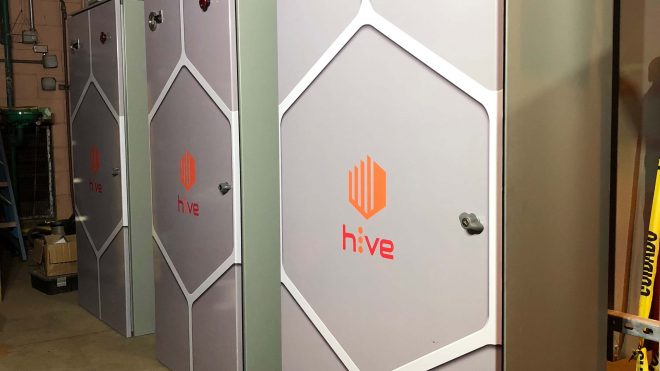HNU Energy completed the installation of a cutting-edge solar photovoltaic and energy storage and management system for VIP Food Service in December 2017. The system was custom designed and built using best in class products: a 100% ballasted, SunPower HELIX system integrated with a HiVE Energy Systems battery storage solution (picture below).
HNU engineered a novel approach to maximize the energy output of the PV system. A traditional PV system feeds its energy into the building and whatever isn’t consumed is exported to the grid, but because of solar saturation on Maui, that wasn’t an option for this project. HNU matched the output of the panels to the building’s energy usage throughout the day and computer controlled equipment takes excess power to charge the HiVE energy storage system. Incorporating HiVE batteries enabled a larger PV system, harvesting energy during the day and dispensing it after the sun is down, extending the benefits of solar PV into the night time and saving the customer even more money.
VIP’s location on Maui’s North Shore presented a uniquely corrosive, windy, and sunny ecosystem, influencing system design. The system is held in place with 10,000 ballast blocks, and all exterior components are made of aluminum, stainless steel, glass, and corrosion-resistant PVC. HNU Energy worked with Maui County and Maui Electric Company for approval of the unique project, and chose to locate the heart and brains of the system in a protected interior space. HNU’s in-house structural engineer designed a 14’ tall aluminum-strut wall to support the key components.
VIP Foodservice is one of Maui’s largest and most respected companies. They import, store, and deliver food to the Hawaii’s best hotels and restaurants. Their unique business requires the use of many commercial coolers for their industrial freezer and the energy used by these coolers is one of their biggest expenses. The half-megawatt of SunPower PV coupled with HiVE Energy Systems battery storage will greatly reduce VIP’s operating costs for decades and brings Hawaii one step closer to its 100% renewable energy goal by 2045

